Search Results
Fine Jewelry University Articles matching: “zircon”
Showing only FJU Article results. Click here to show all results.
Fine Jewelry University (Show All FJU Articles)
-
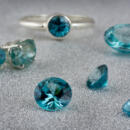
Gem in the Spotlight: Blue Zircon
Zircon may be last in the alphabet of gemstones, but it is first in sparkle. The crystal structure of zircon creates one of… found in any colored gem. In fact, before any of the manmade diamond simulates were made, the colorless version of zircon was used in jewelry to mimic diamond. Why? Natural zircon is known for its scintillation, brilliance, and flashes of … fire just like diamond. Zircon also is known for its variety of colors. Blue zircon is the most popular color. But, zircon can be almost any color you can imagine including red, yellow, orange, brown, green, champagne, golden, saffron, and…
-
The Birthstones
… a current day birthstone for this month. Learn more about Topaz and Citrine December’s Birthstones: Turquoise (Blue Zircon, Blue Topaz, Tanzanite) Turquoise is found in Egypt, Persia (Iran), Tibet, and the Americas. It has been treasured …to come via Turkey. Turquoise is associated with Innocence. Present day additions to December’s birthstones are Blue Zircon, Blue Topaz, and Tanzanite. Learn more about Topaz , Tanzanite , and Blue
-
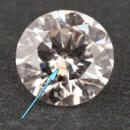
What Are Lab Grown Diamonds?
… that lies at the heart of our laser welder . The most popular diamond simulant by far today is synthetic Cubic Zirconia (CZ) . It is cheap to produce and sparkles very brilliantly. It is a great example of a synthetic gemstone that is a … confusion it can create. There is another diamond simulant that creates a lot of confusion. Diamond coated Cubic Zirconia (CZ) gems are produced using the same Chemical Vapor Deposition (CVD) technology that is used to produce lab grown …
-

How to Tell If a Diamond Is Natural or Lab Grown
… and synthetic diamonds before continuing with this article. So, now you know that lab grown diamonds are just as real as natural diamonds, but we still want to be able to tell them apart. When it comes to diamond simulants like Cubic Zirconia (CZ) or Moissanite, it is easy to identify them because they aren’t diamonds. But, with lab grown diamonds, the chemical structure and properties are all the same as natural diamond, so it becomes much more difficult to …
-
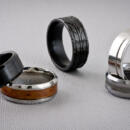
Alternative Metals for Men’s Jewelry
…Overall, ceramic jewelry is a great option with space-age tech for someone who wants a non-traditional wedding band. Zirconium Zirconium is a natural element which begins with a silver color. Zirconium is then heat treated and exposed which… feature in the jewelry world as most black metals are the result of plating or antiquing which fades overtime. Zirconium is currently the only permanently black jewelry that is workable enough to allow the setting of diamond or other gems…
-
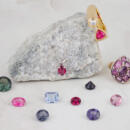
Gem in the Spotlight: Spinel
… been used and perfected to create spinel in even more colors than it is naturally found in. Because of how easily it can be created in a lab, synthetic spinel has been used to imitate many other gemstones (ruby, sapphire, tourmaline, zircon, etc.). In fact, the ubiquity of synthetic spinel may be part of the reason why most people have been slow to appreciate natural spinel in its own right. Interestingly, most lab-created spinel has a slightly higher refractive index …
-
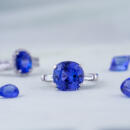
Gem in the Spotlight: Tanzanite
… scarce in the future, further driving its desirability. Tanzanite is currently one of the rarest gemstones, and it is only found in one place on earth. In 2002 tanzanite was added as one of the birthstones for December alongside blue zircon, turquoise, and blue topaz. Tanzanite is believed to symbolize transformation and spiritual awakening. It is often associated with the idea of personal growth and enlightenment, helping individuals connect with their higher selves. It…